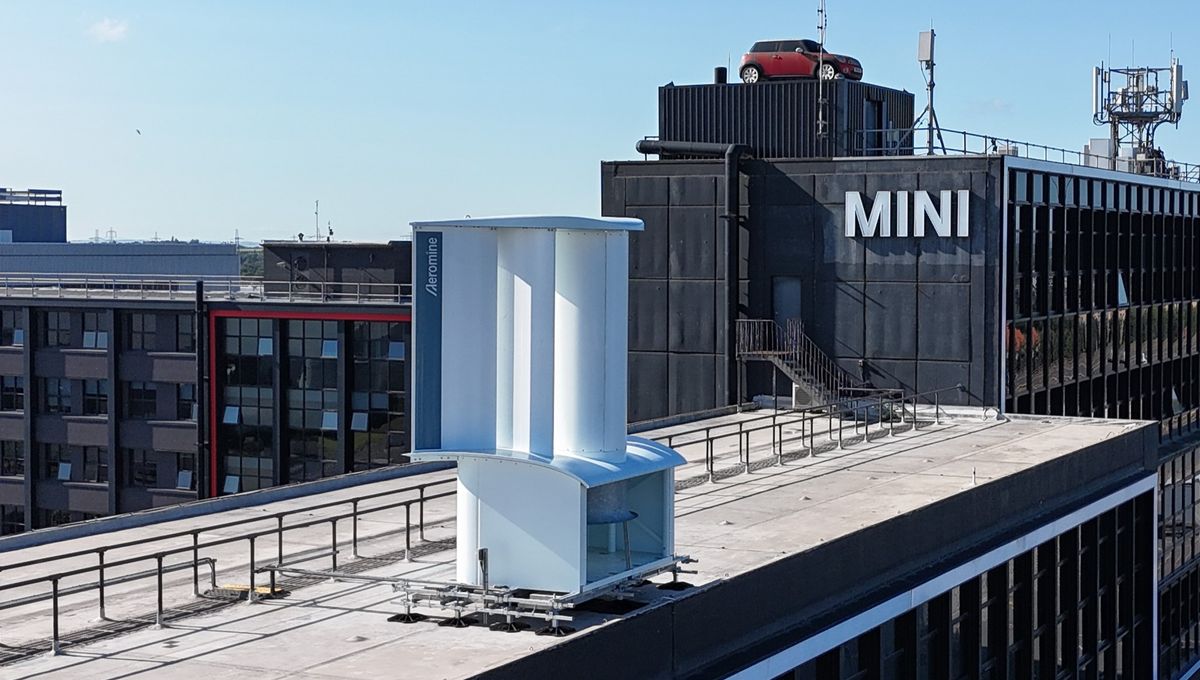Imagine a wind turbine that doesn’t look like a wind turbine at all. That’s what Aeromine Technologies has created. Instead of the traditional large blades, this unit features a towering central column and vertical airfoils, reminiscent of the curved structures seen on airplane wings.
The unique design is engineered to create a vacuum effect. When positioned on the edge of a building and facing the prevailing wind, the design amplifies the wind speed flowing into the unit, creating a low-pressure region behind the central column.
This causes the air to be drawn through the bottom of the unit, where a propeller awaits. Much like a traditional wind turbine, the propeller spins a generator, and voila, you have electricity.

BMW has installed this innovative turbine on its roof as part of its commitment to reducing its carbon footprint. The company has already installed solar panels across its site. However, the UK isn’t known for its sunny winters or, for obvious reasons, its sunny evenings.
But what the UK does have is wind, and that’s exactly what this unit is designed to harness. “Our ‘motionless’ wind energy technology is designed to work seamlessly alongside solar systems, maximising the renewable energy output from rooftops,” said Aeromine’s managing director Claus Lønborg.
Lønborg also suggests that the bladeless design could help to mitigate issues such as noise and vibrations, and potentially address a long-standing concern with traditional wind turbines: their impact on wildlife, particularly birds.
While the number of birds killed by wind turbines each year is relatively small compared to other threats, it remains a significant concern, especially for vulnerable species. The “motionless” wind turbine could be a solution, but replacing existing wind farms would be costly. Therefore, other creative solutions are being explored, such as making turbine blades stripy or adding giant bird boxes.






![Halloween Slasher ‘Creeping Death’ to Debut on SCREAMBOX Tomorrow [Video]](http://hypernovapress.com/wp-content/uploads/2024/09/6377-448641356_122147373938225151_888.jpg)
